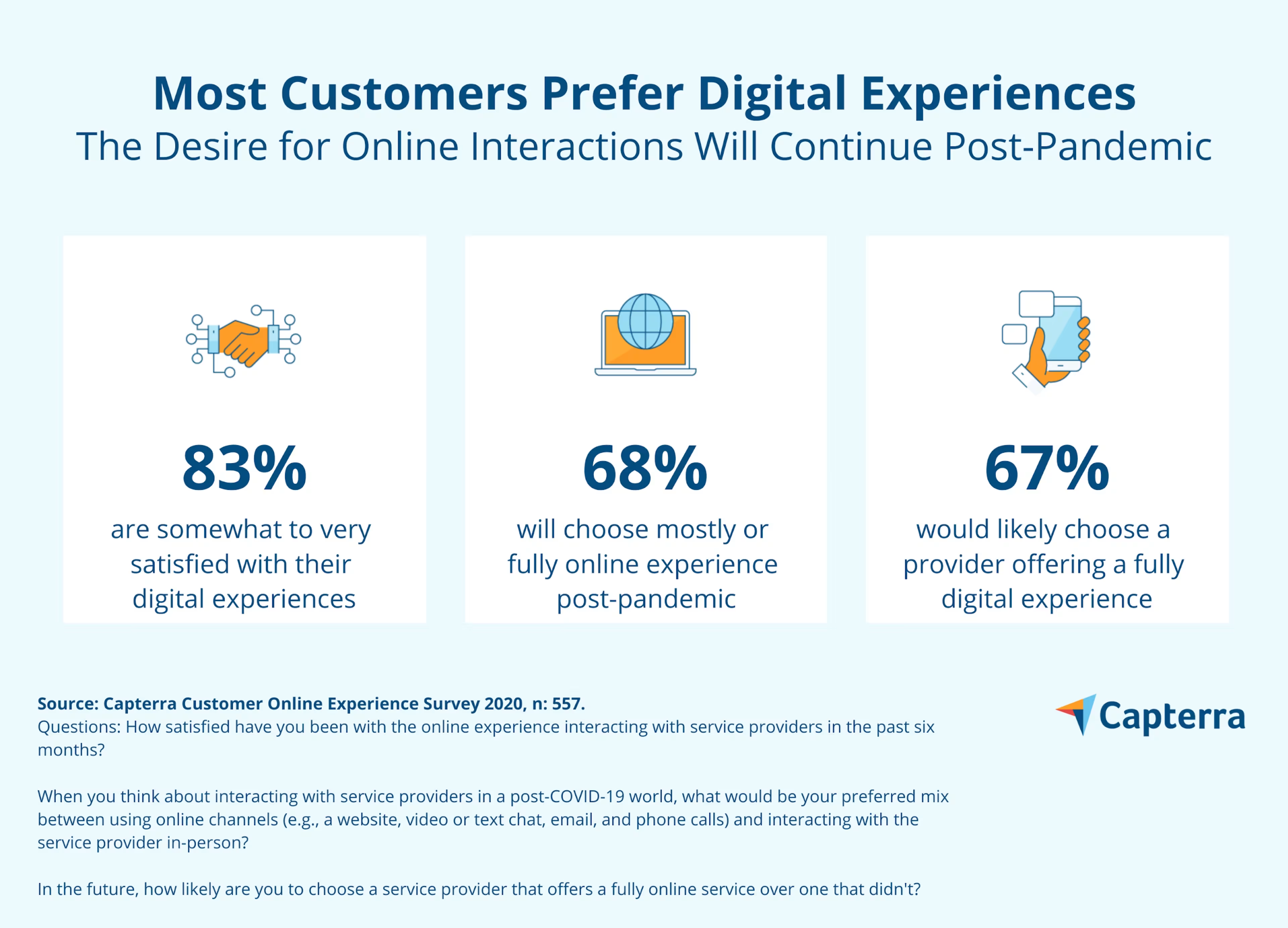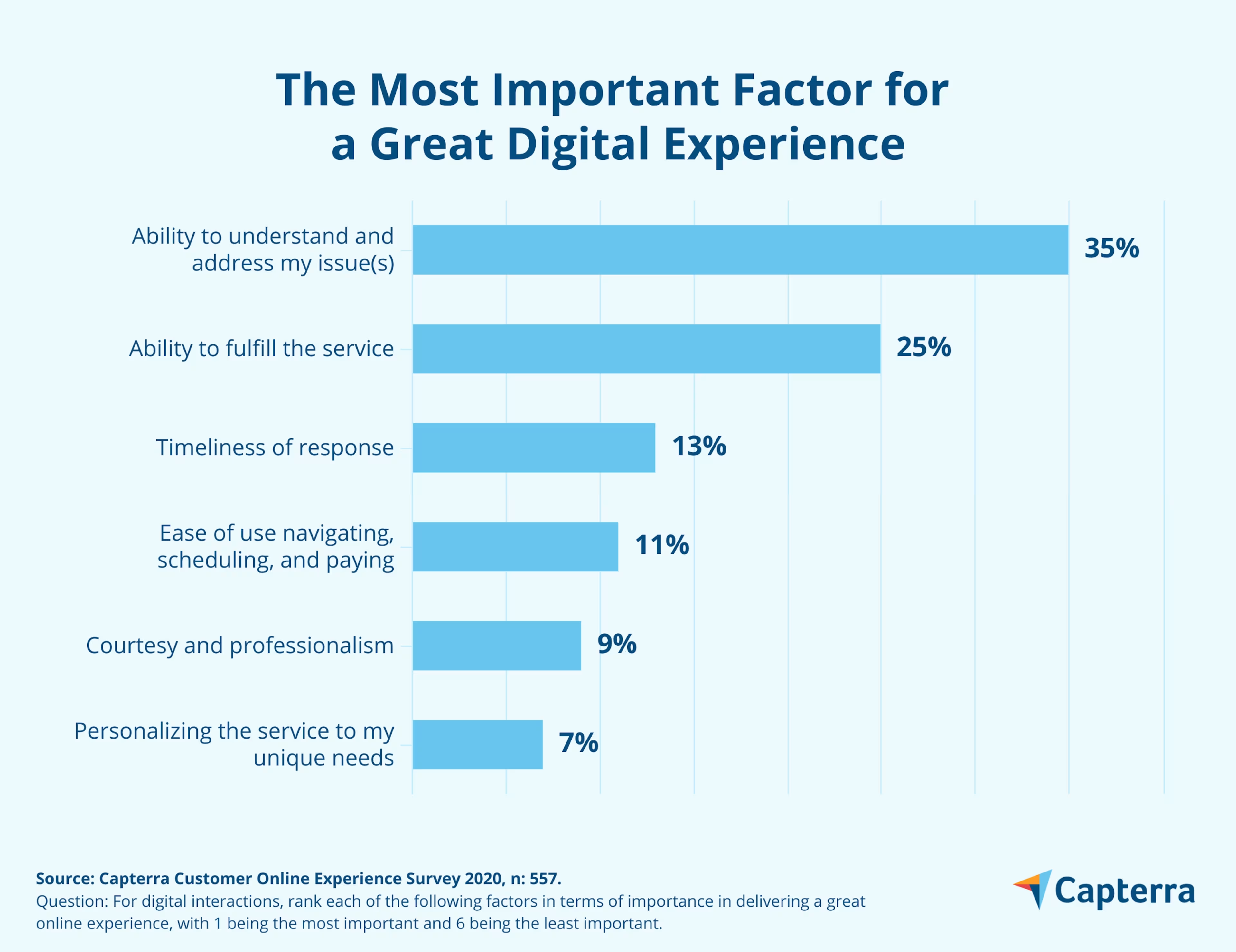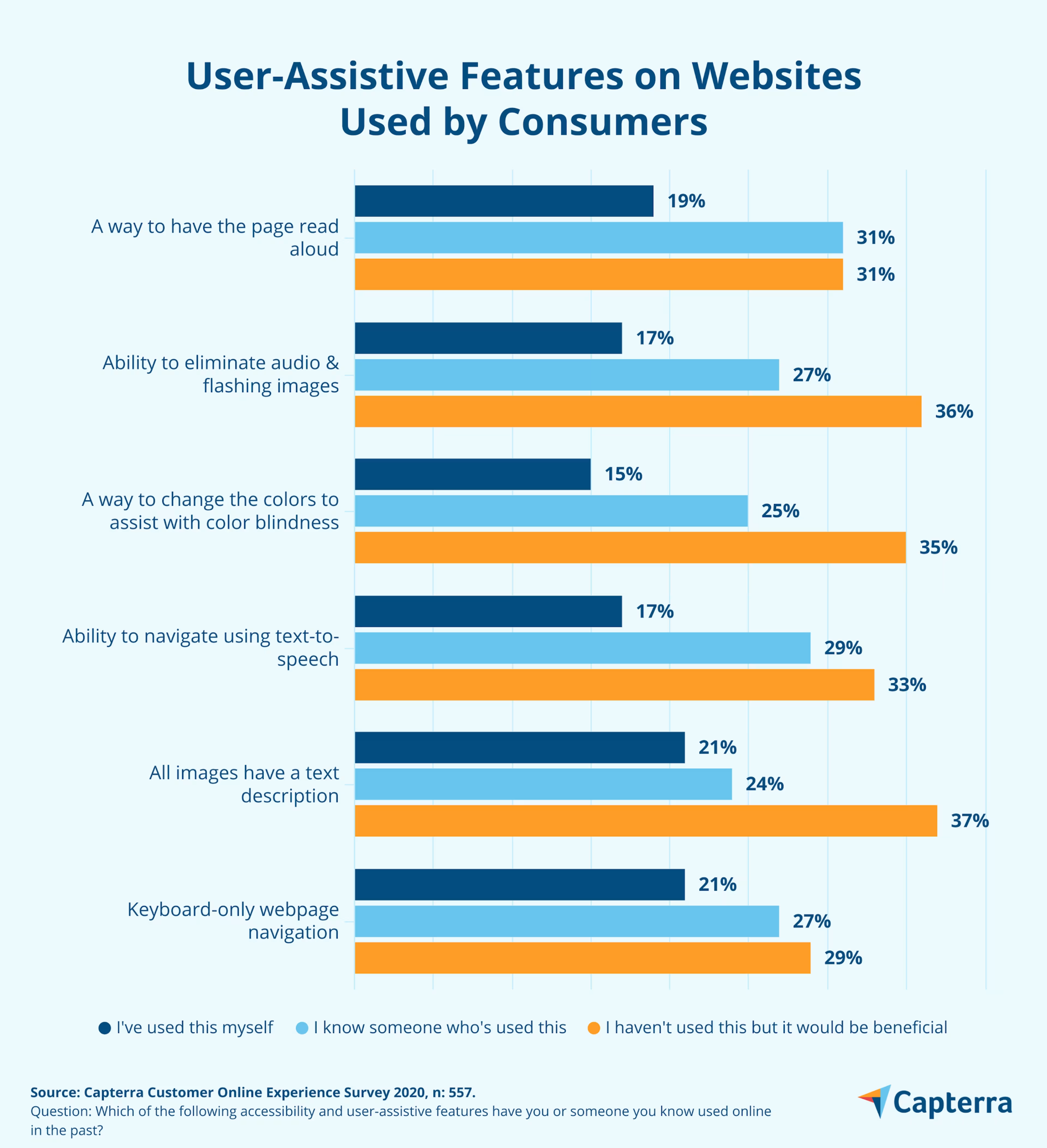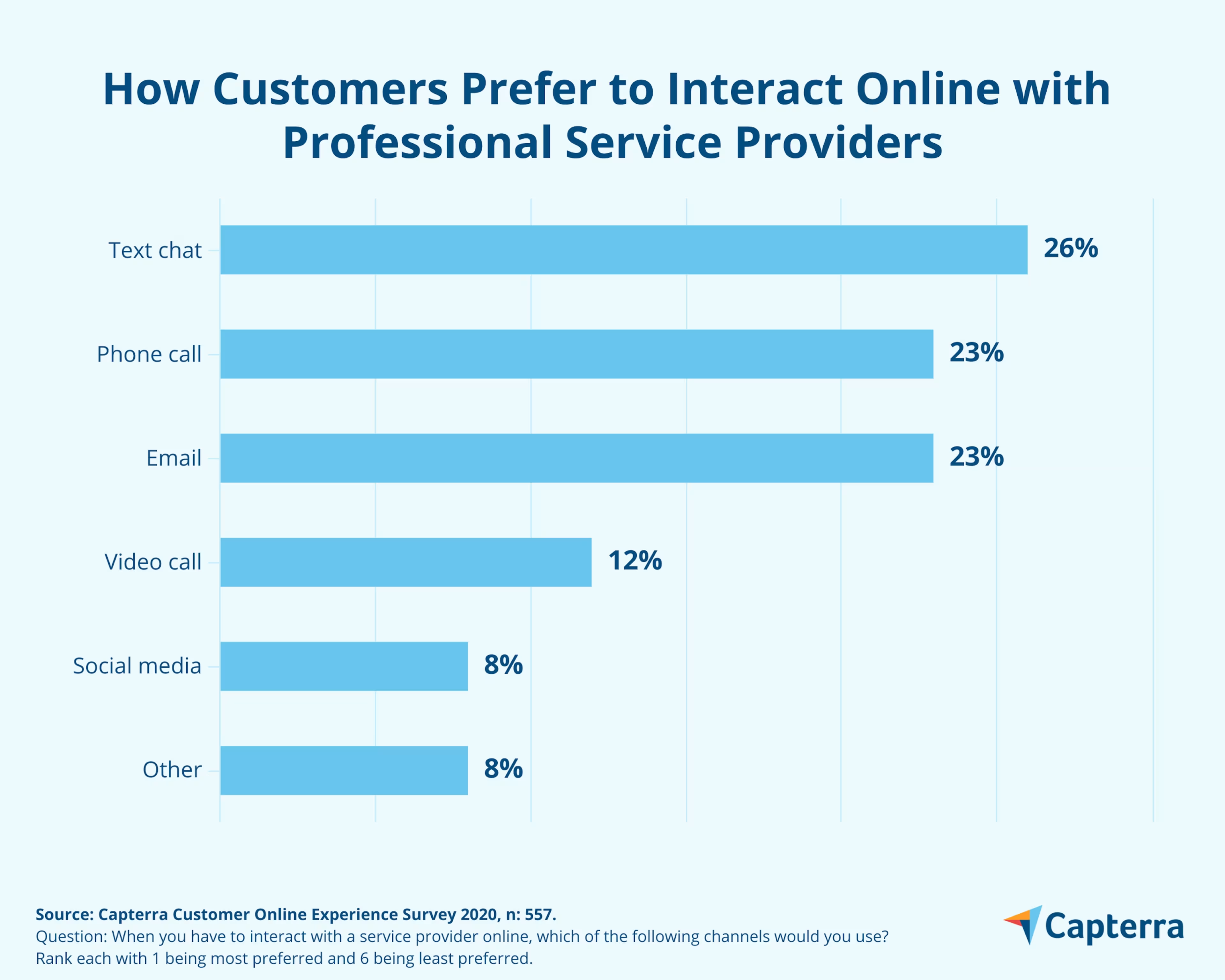For professional service providers, an inclusive digital experience will bring long-term success.

Consumers are familiar with online shopping and digital marketing, but working online with a lawyer or an accountant is still a pretty new experience. Not all consumers are comfortable with a fully digital experience, especially with professional service providers who have traditionally relied on in-person meetings.
But, the pandemic continues to impact our health and safety, and technology is stepping up to meet the challenges of social distancing. You need to create a positive digital experience for your customers—one that builds a long-lasting relationship and is welcoming to all consumers.
To help you, we surveyed 557 consumers who had at least one fully digital experience with a professional service provider in the last six months to find out how they felt about the all-digital interaction, what they're expecting in the future, and how professional service providers like you can prepare for this.
Using these findings on current consumer expectations, we’ll guide you on how to move from a mere digital presence to a comprehensive strategy to foster long-term relationships and online business for all consumers, now and post-COVID.
Key takeaways from our consumer survey:
61% say the ability of the service provider to understand and address the issue(s) is key to delivering a great online experience.
67% report they are more likely to choose a provider with a fully online service.
32% say they are most likely to do business with a service provider if they receive communications “about [their] specific situation or needs.”
What does a digital experience look like for a professional service provider?
For professional service providers, it’s time to go beyond digital marketing to provide your customers with a digital experience that meets their new expectations.
To start, Gartner recommends shifting your thinking so that “digital is now the context in which business occurs, not a mechanism for conducting it” (full report available to Gartner clients only).
Gartner says it’s also time to think beyond the concept that digital means “remote” (full report available to Gartner clients only). You need to create a welcoming digital relationship that includes marketing, online meetings, communications, and follow-ups all bundled into a thoughtful customer experience.
Let’s get into what consumers expect and need from a great digital experience. Each section will focus on one area of the digital customer journey and offer tips on what you can do for each.
Your digital business model: Demand for digital experiences is here to stay
While some meetings and consultations may switch back to in-person when it’s safe to do so, the satisfaction levels for online interactions have been high: Over 80% of respondents are satisfied (“somewhat” and “very satisfied”) with their most recent online interaction with a service provider.

The satisfaction of customers in interactions since the beginning of the pandemic is impacting the long-term tastes of consumers. Sixty-eight percent of respondents say in the future they will be more likely (“somewhat likely” and “very likely”) to choose a provider with a fully online service over one that doesn’t have one.
This means that investing in a great digital experience is worth your time now and for the future of your business.
Your service offering: Understanding the customer’s issue is key to a great interaction
Three out of four respondents placed “ability of the service provider to understand and address my issue(s)” in their top three most important factors in digital interactions with a service provider. But does this seem obvious?
Well, let’s consider if consumers hadn’t ranked this factor very high—that could indicate their need is being met consistently enough that they wouldn’t even think about it. The fact that the overwhelming majority rank it so high is telling that not every interaction has been a successful one. They’ve left the meeting with unanswered questions or had been transferred around to multiple people before getting someone who could help.
Enhance your digital customer experience
Don’t forget to cover the basics in your relationship with each client or customer. Listen to their needs and concerns without making assumptions or jumping ahead of them.
Include time or space at the end of every meeting and communication for your customer to ask questions.
Empower your front-end employees to provide as much information on as many different issues as possible to avoid having to transfer the customer multiple times.
Diving deeper into the top factors
Let’s get into how often each factor of a great online experience was ranked as the most important to consumers that we surveyed.

Continuing the trend of covering the basics for your customers, we see that the “ability of the service provider to fulfill the service” is the second top factor of what makes a great digital experience with 25% of respondents choosing it as the most important. This number indicates the frustration your customer experiences when they come to you with perhaps a misunderstanding of your offerings.
Enhance your digital customer experience
Evaluate your marketing material for clarity on what you offer. While aesthetics and the channel (social media, email, etc.) you use are important, your explanation of services offered needs to be crystal clear.
To build on the top-ranked factor above, be clear on what your customer is looking for from you and be honest about your ability to help them.
As for which factors were ranked the least important, the majority (54%) rank “ease of use with navigating, scheduling, and paying for services” as the least important factor in their digital interactions with a service provider. This isn’t to say it’s not important—it means that generally, the functionality meets expectations.
Your website: Building a welcoming user experience for everyone
From weak internet connections to accessibility issues, everyone experiences difficulty with online interactions at least some of the time. You don’t want to alienate any potential or current customers. Designing an inclusive digital experience doesn’t have to mean a major overhaul of your offering—let’s get into the main accessibility issues and tweaks you can make to accommodate your customers.
Challenges due to a weak internet connection
Two out of three respondents “sometimes,” “often,” or “always” experience challenges online associated with a weak internet connection or signal.

And this wasn’t just rural consumers—35% of urban respondents report having weak internet connections “often” or “always.” Don’t make assumptions about the technical needs of your clients based on where they’re at, because you could be alienating over half of your potential clients.
Fifty-four percent of respondents say it is “somewhat” or “extremely important” that service providers offer an online experience that is still usable with a weak internet connection.
Enhance your digital customer experience
Optimize your website with tweaks such as compressing image sizes, reducing the number of ads you allow to be displayed, and limiting the use of video to relay critical information. Each of these significantly impact the load time of your website and you could lose a potential client before they even see your offering.
Provide multiple ways for customers to contact you, including the traditional phone call. Even if consumers are trending away from using “old school” interaction methods, there are still times when the internet just isn’t up to speed for a video chat.
Challenges due to a disability
From website design to remote meetings, the digital experience you offer should be welcoming and successful for everyone. Over half (56%) of respondents say it is “somewhat” or “extremely important” for service providers to offer an online experience that is accessible and usable by people with disabilities, even if they themselves don’t require accommodations.
Let’s dive into some of the most common user-assistive features offered on websites and how often they’re used by consumers:

The features in this chart help users with vision impairments, sensory sensitivities, weak motor function, and/or anyone needing to modify their online experience.
Enhance your digital customer experience
Work with a web designer who understands inclusive design to update your website for the most welcoming customer experience possible. Little tweaks can have a major impact.
When designing the customer journey in your new digital experience, take into consideration the strengths and weaknesses of the digital experience platform and content type you use. For example, social media is great for video but also provide that same info on your website in text form.
Your communications: Digitally transform your messages to customers
The types of messages you send to customers should build on the great digital experience you’re providing. But are you sending out the messages they want?
First, let’s get into how customers prefer to interact with businesses online:

From emails to text chats to social media posts, we found that no one type of messaging platform dominates in preference. Based on how varied these findings are, a one-size-fits-all form of communication will leave out more customers than you may expect. So be sure to vary where you’re sending out and able to receive messages from your customers.
Now, let’s get into what information you should include. We asked our survey takers to rank the types of messages that would likely lead them to doing business with a service provider again.
Based on our findings, here’s the types of messages consumers want:
Personalized: 32% of respondents say they are most likely to do business with a service provider if they receive communications “about [their] specific situation or needs.”
Support for employees and customers: 16% say they prefer communication about how the business is supporting its employees and customers.
New services: 14% say they prefer communication about a new product or service.
What consumers don’t prefer:
Feedback requests: 24% rank asking for customer feedback on how the business can improve its service as their least preferred type of communications. Only 6% of respondents prefer feedback requests the most.
Trend reports: 20% of respondents rank communications about industry trends related to the service the business provides as their second least preferred type of communication. Only 5% prefer trend reports the most.
Enhance your digital customer experience
Expand your options for customers to reach out to you on multiple channels. Provide your business phone number, include links to your social media account(s), and have a live chat function on your website.
Check if your CRM system can track the communication type preference for each of your customers, including email, phone call, and direct message. Some products can even use this preference in automated workflows so the customer always receives messages in the format they prefer.
It could be time to invest in new software to enhance and automate your digital marketing, such as email marketing software or all-in-one marketing software. Many products integrate with multiple social media platforms and allow you to send communications in different channels.
Use digital technology to design a great digital service
Your current and post-pandemic business strategy should include a welcoming digital experience for your customers at each step of the interaction. Use the insights shared here on what consumers expect from digital experiences to help design one for your business.
If you're considering investing in software to support your efforts, from CRMs to content management to task management software, we've got thousands of user reviews for a variety of products. Software can help manage your customer data, provide performance insight via analytics and metrics, automate content publication across multiple channels, and help increase customer satisfaction with personalized messages and appointment scheduling.
Capterra is a resource you can turn to again and again. We help you ask good questions and learn from other people’s experiences, so you can do better work every day.
Depending on your needs, you can hire a digital marketing agency and/or a UX design agency for help with optimizing your digital experience. Check out our hiring guides for digital marketing agencies and UX design agencies to determine the best fit for you.